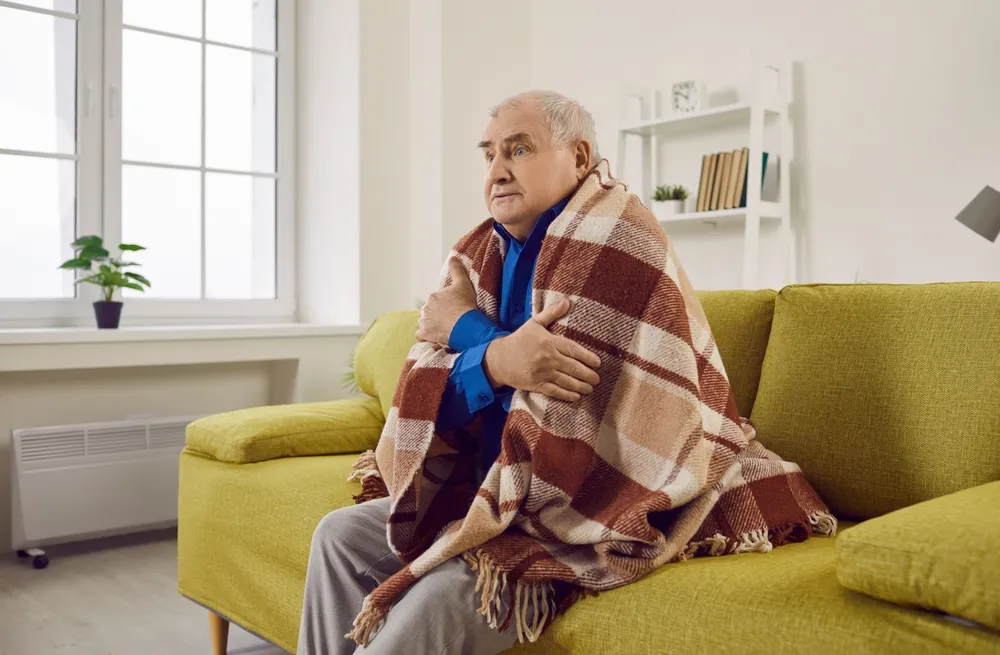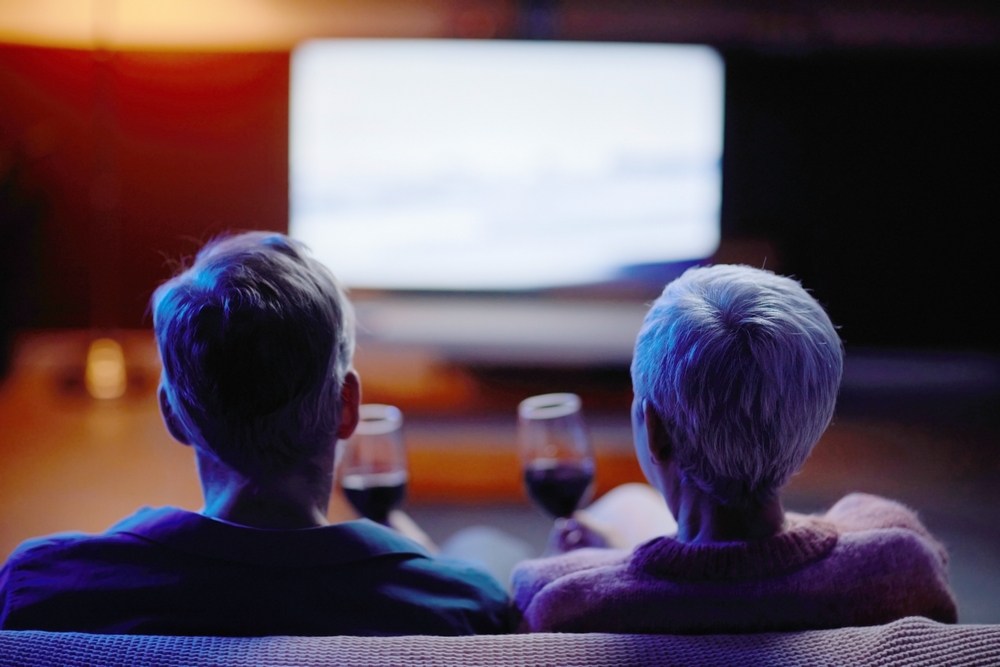Balancing expenses is becoming a high-wire act as the cost of living keeps rising, particularly when it comes to paying rent. People are faced with tough choices, often having to cut back on essentials they once considered non-negotiable. It’s not just about skipping the morning latte anymore; it’s about making more significant sacrifices to keep a roof over your head. Here are some surprising essentials people are now going without to make rent.
1. Nutritional Groceries

Eating healthy seems like a no-brainer, but when budgets tighten, fresh produce and organic items often get the axe. People are swapping out fresh vegetables for cheaper, processed options to stretch their food dollars further. A study by Dr. Casey Wilson at the University of Michigan found that nearly 60% of surveyed renters have reduced their grocery quality to save on expenses. This swap might save money in the short term, but it often leads to longer-term health costs. People are increasingly relying on canned goods and frozen foods, which can lack the nutrients found in fresh options.
The impact on health is not to be underestimated, as a poor diet can lead to increased doctor visits and higher medical bills down the road. People are forced into a difficult cycle where saving money now may cost more in the future. It’s a juggling act that many aren’t prepared for, and it’s not just their health at risk. When nutritional groceries are cut from the budget, energy levels and productivity can suffer too, impacting work and daily activities. The ripple effects of this decision can be far-reaching and long-lasting.
2. Reliable Internet Service

In a world that increasingly relies on digital connectivity, cutting back on internet service seems unfathomable. Yet, people are finding themselves downgrading to slower, less reliable connections to save money. This decision can have severe implications for those who work from home or have children in virtual learning environments. Slow internet can hinder job performance and make tasks like video conferencing a nightmare. Despite the inconvenience, it’s a sacrifice some are willing to make to manage rent payments.
This choice also affects access to news, entertainment, and social interaction, which are all increasingly digital. People are finding creative solutions, like using public Wi-Fi at libraries to stay connected. While this might work temporarily, it doesn’t offer the same security or convenience as a home connection. Additionally, the reliance on public spaces for internet can increase transportation costs, potentially negating any savings. It’s a trade-off that highlights the difficult choices people must make.
3. Healthcare Appointments

Skipping healthcare appointments can seem like an easy way to cut costs, but it’s a decision that comes with significant risks. When rent consumes a larger share of the budget, people may feel forced to delay or cancel both routine and necessary medical visits. According to Dr. Linda Perez at Health Economics Institute, nearly 25% of renters have postponed healthcare services to afford rent. This can lead to untreated conditions worsening, resulting in emergency room visits that cost far more than preventive care. It’s a gamble with health that people are reluctantly taking.
The repercussions extend beyond just physical health, impacting mental well-being as well. Anxiety over health issues can exacerbate stress already heightened by financial strains. Being unable to attend a scheduled appointment can also mean prolonged pain or discomfort. People are left weighing the immediate savings against long-term health outcomes. This trade-off isn’t sustainable, yet it’s a reality for many aiming to make ends meet.
4. Personal Transportation

Owning a vehicle provides immense convenience, but the costs associated with maintenance, insurance, and fuel are prompting people to reconsider its necessity. Some are trading in their cars for public transportation passes or resorting to cycling. While this can be an economical and environmentally friendly choice, it isn’t always practical, especially in areas with limited public transit options. The loss of personal transportation can also affect job opportunities, limiting where people can work. It’s a shift that requires substantial lifestyle adjustments.
Switching to public transport can add hours to daily commutes, reducing time available for family or personal activities. The cost savings might be significant, but they come with a loss of flexibility and independence. People are finding themselves at the mercy of timetables and delays, which can add stress to an already challenging situation. Carpooling or ride-sharing may soften the blow but can be unreliable. These choices highlight the complex decisions involved in managing rising living costs.
5. Energy Costs

Reducing energy consumption might seem straightforward, but the stress of balancing energy bills with rent can lead to unhealthy living conditions. People are turning thermostats down in the winter or up in the summer to cut costs, potentially compromising their comfort and health. This trend was highlighted in a report by the Energy Efficiency Institute, which stated that 35% of renters are reducing energy use to offset rent hikes. While it might save money short term, the discomfort can affect both mental and physical health. Drafty apartments and sweltering summers may lead to health complications, especially for the young and elderly.
The lack of adequate heating or cooling can also impact sleep quality, leading to fatigue and decreased productivity. People are forced to get creative, layering clothing or investing in fans and space heaters, which may also incur additional costs. The trade-off between comfort and savings is stark, as people grapple with how to keep their homes liveable. Energy conservation efforts are commendable, but when driven by necessity rather than choice, the benefits are overshadowed by the costs. This compromise is just one more example of the sacrifices being made for affordable housing.
6. Tech Upgrades

Staying current with technology feels almost essential in today’s digital world, yet it’s one of the areas people are cutting back on. The latest gadgets and software updates often carry prohibitive costs, prompting people to stick with older tech. While this may seem manageable, outdated technology can slow down work and reduce efficiency. It can also lead to compatibility issues with newer systems, creating further inconveniences. However, when rent takes precedence, staying on the cutting edge becomes a luxury, not a necessity.
Without access to current technology, people may find themselves at a disadvantage in the job market. It becomes challenging to compete when lacking the tools that others take for granted. The decision to forgo tech upgrades can also limit educational opportunities, especially for children who need access to the latest learning tools. The overall effect is one of gradual obsolescence in a world that is rapidly advancing. While it’s a practical solution to immediate financial constraints, the long-term implications are worth considering.
7. Fitness Memberships

Fitness memberships used to be a staple for anyone wanting to stay active, but now they are frequently viewed as a non-essential expense. People are canceling gym memberships and opting for at-home workouts or outdoor activities instead. This trend was highlighted by Dr. Emily Trent from the Wellness Research Center, who found that 40% of renters have moved away from paid fitness facilities to manage finances. While this shift can promote creativity in staying fit, it may also lead to less motivation and accountability. The social aspect of gyms, which can be a significant motivator, is lost when working out alone.
For many, the gym isn’t just about exercise; it’s a community and a space dedicated to personal wellness. The loss of this environment can affect both physical and mental health. Without access to the range of equipment and classes offered by gyms, people may find their routines less effective. The cost savings can be significant, but they come with a potential decrease in fitness levels and overall well-being. Finding free or low-cost alternatives becomes a necessity, but it never quite replaces the gym experience.
8. Dining Out

Dining out is often one of the first luxuries to go when budgets tighten. People are cooking more at home and reserving restaurant visits for special occasions. While this change can lead to healthier eating and more family time, it also limits social interactions and the enjoyment found in trying new cuisines. For those who enjoy the convenience of dining out, adjusting to a strict home-cooking regimen requires planning and creativity. It’s a compromise that comes with its own set of challenges.
The savings from reducing dining out can be significant, but they require a shift in lifestyle and priorities. People may find themselves spending more time grocery shopping and meal prepping, which can be time-consuming. There’s also a learning curve for those not accustomed to cooking regularly. Despite the challenges, many see this as a necessary change to manage living costs. The benefits of saving money are clear, but the lifestyle adjustments are substantial.
9. Streaming Services

Cutting back on streaming services is another way people are managing their budgets. With so many platforms available, the monthly costs can add up quickly. People are reassessing which services they truly use and enjoy, often keeping only one or two subscriptions. This decision requires weighing the benefits of varied content against the cost savings. It’s a shift that highlights changing priorities, focusing on essential entertainment over endless options.
The decision to cut streaming services can impact how people unwind and relax at home. For some, it means revisiting older DVDs or relying on free content, which may not offer the latest in entertainment. This choice forces a re-evaluation of media consumption habits, potentially leading to more intentional and mindful viewing. While it saves money, it can also feel limiting, especially for those who enjoy exploring a broad range of content. Despite the drawbacks, it’s a necessary adjustment for many dealing with rising living expenses.
10. New Clothing

Buying new clothing has taken a backseat as rents climb higher, with people opting to make do with what they already own. The fast fashion trend, once a go-to for affordable style, is seeing a decline as budgets tighten. People are turning to thrift stores, clothing swaps, and DIY repairs to refresh their wardrobes. While this practice supports sustainability, it also limits personal expression through fashion. It’s a trade-off between fiscal responsibility and the desire to stay current with trends.
The change in shopping habits can also affect social and professional settings, where appearances matter. People may feel pressured to maintain a polished look without the benefit of new clothes. This shift in priorities encourages creativity and resourcefulness but can be challenging for those who find joy or confidence in fashion. Over time, the lack of new clothing can feel restrictive, though it may also foster a greater appreciation for what one has. It’s a balance between necessity and the small luxuries that new clothing can represent.
11. Pet Care

Pet care costs can add up quickly, leading some to make difficult choices about their furry companions. People are cutting back on professional grooming, opting to handle it themselves or less frequently. They might also reduce spending on premium pet food, toys, and treats, which can impact their pet’s health and happiness. The decision to cut corners can weigh heavily, as pets are often considered family members. It’s a compromise that can affect both the pet’s and owner’s quality of life.
The financial burden of pet ownership can be overwhelming when competing with housing costs. People are forced into a position where they must prioritize essential care over extras. This might mean postponing non-emergency vet visits or choosing budget-friendly products. While the sacrifices are understandable, they can feel heart-wrenching for those deeply connected to their pets. The emotional toll of these decisions adds another layer of complexity to managing finances.
12. Education And Skill Development

Investing in education and skill development is a long-term strategy for personal growth and career advancement. However, with increasing rental costs, these investments are becoming less feasible for many. People are postponing courses, workshops, and even certifications to allocate funds towards housing. This decision can stall professional progress and limit future earning potential. The ripple effect on career growth is evident, as people find themselves stuck in current roles without the skills needed to advance.
The lack of opportunity for self-improvement can lead to stagnation and frustration. People may feel trapped in a cycle where they can’t afford to invest in their future, yet need those investments to improve their financial situation. Online resources can provide some relief, but they often lack the depth and accreditation of formal education. The long-term impact of these choices can affect career satisfaction and earning power. Despite the immediate savings, this trade-off can have lasting consequences on personal and professional development.
13. Travel And Experiences

Traveling and exploring new experiences are often viewed as essential for a fulfilling life. Yet, with rising rents, these adventures are being placed on hold. People are opting for staycations or exploring local attractions instead of venturing far from home. While this can encourage a deeper connection to one’s immediate surroundings, it limits exposure to diverse cultures and experiences. The savings are undeniable, but the lack of travel can feel like a significant loss.
The decision to cut back on travel and experiences can impact social connections and personal enrichment. It may lead to a narrower worldview and fewer opportunities for memorable adventures. People are finding creative ways to recreate travel experiences through virtual tours or themed evenings at home. Despite these efforts, the absence of real-world exploration can be felt keenly. This compromise is a stark reminder of the financial pressures reshaping priorities and lifestyles.
This article is for informational purposes only and should not be construed as financial advice. Consult a financial professional before making investment or other financial decisions. The author and publisher make no warranties of any kind.








